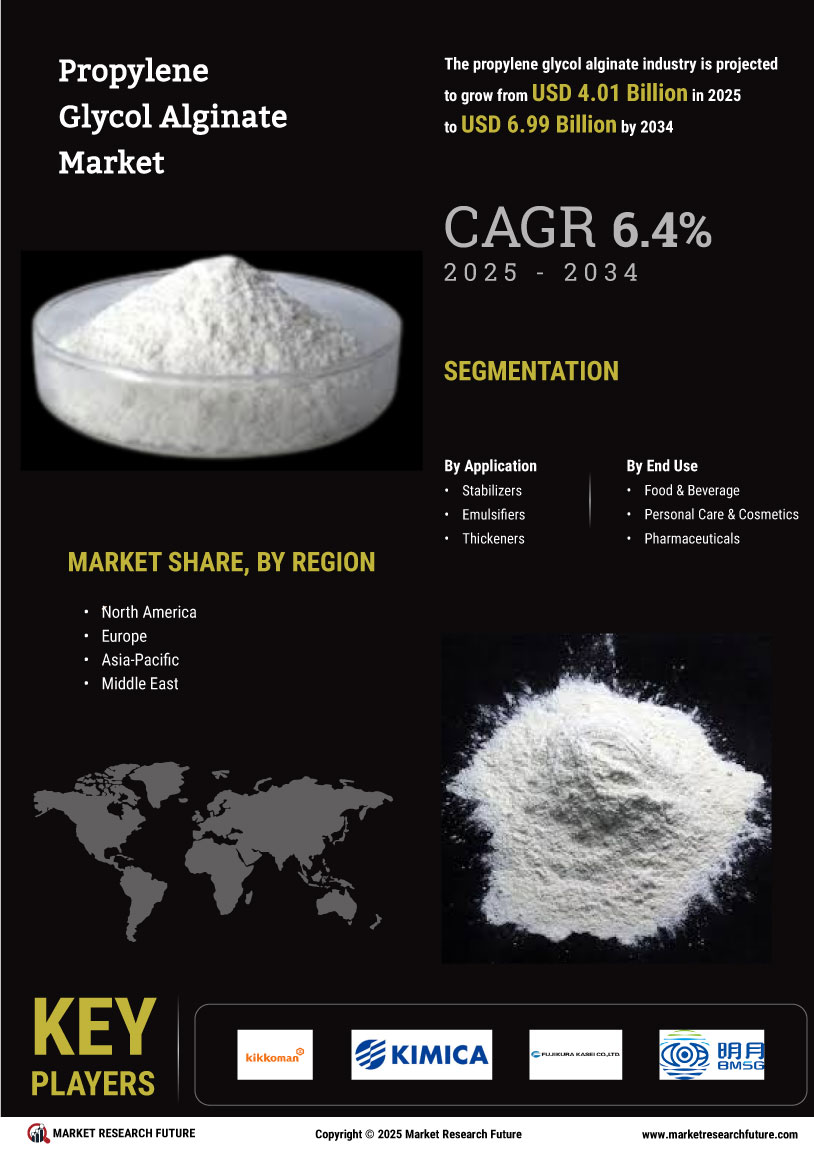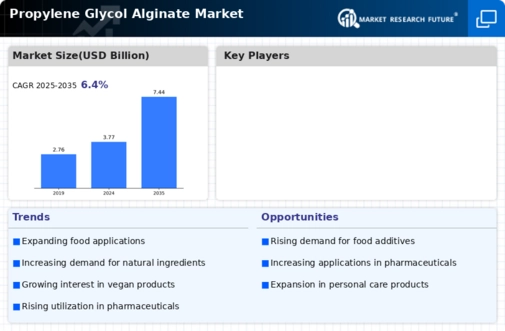Propylene Glycol Alginate Market Summary
As per Market Research Future Analysis, the Global Propylene Glycol Alginate Market was valued at USD 3.77 Billion in 2024 and is projected to grow to USD 7.43 Billion by 2035, with a CAGR of 6.37% from 2025 to 2035. The market is driven by the increasing demand for gluten alternatives and food additives in the food and beverage sector. Propylene glycol alginate (PGA) is favored for its texture, stability, and viscosity, aligning with the clean label trend in food products. The food and beverage industry is the largest end-use segment, while the personal care and cosmetics sector is expected to grow significantly.
Key Market Trends & Highlights
The propylene glycol alginate market is witnessing significant growth driven by various trends.
- Market Size in 2024: USD 3.77 Billion.
- Projected Market Size by 2035: USD 7.43 Billion.
- CAGR from 2025 to 2035: 6.37%.
- Food & Beverage sector accounts for the largest revenue share.
Market Size & Forecast
| 2024 Market Size | USD 3.77 Billion |
| 2035 Market Size | USD 7.43 Billion |
| CAGR (2025-2035) | 6.37% |
Major Players
Key players include Universal Preserv-A-Chem Incorporated (U.K), Kikkoman Corporation (Japan), KIMICA Corporation (Japan), Fuji Kasei Co. Ltd (Japan), IRO Alginate Industry Co. Ltd (China), Qingdao Bright Moon Seaweed Group Co.Ltd (China), and Rizhao Jiejing Group Co. Ltd (China).












Leave a Comment